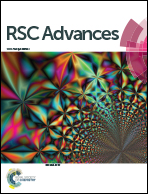High throughput metabolomics-proteomics investigation on metabolic phenotype changes in rats caused by Radix Scrophulariae using ultra-performance liquid chromatography with mass spectrometry†
Abstract
Radix Scrophulariae, a traditional Chinese herb, is used to treat various diseases, including H2O2-induced apoptosis in cardiomyocytes, HaCaT cells, hyperuricaemia, and depression. This study screened metabolites, proteins and common pathways to better understand both the therapeutic effects and side effects of this herb. Methods: Untargeted metabolomics based on UPLC-TOF-MS, coupled with proteomics based on nano-UPLC-Q-Exactive-MS/MS, were used to investigate the effects of R. Scrophulariae in rats. Fifty-one identified metabolites in urine samples and 76 modulated proteins in liver tissue were potential biomarkers for R. Scrophulariae treatment. The biomarkers and common pathways involved were steroid hormone biosynthesis, drug metabolism-cytochrome p450, drug metabolism-other enzymes, pentose and glucuronate interconversions, and starch and sucrose metabolism. Some biomarkers were beneficial for treating diseases such as cancer, tuberculosis and isovaleric acidaemia, while other biomarkers caused side effects. Metabolomic and proteomic analyses of R. Scrophulariae-treated rats provided valuable information on the biological safety and efficacy of using R. Scrophulariae clinically.



 Please wait while we load your content...
Please wait while we load your content...